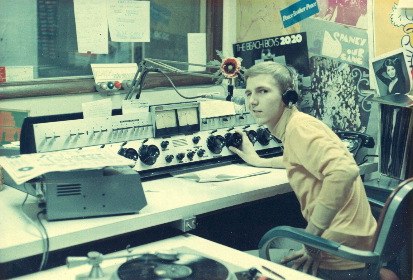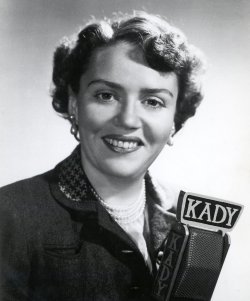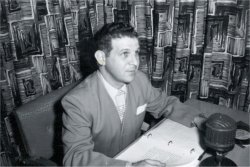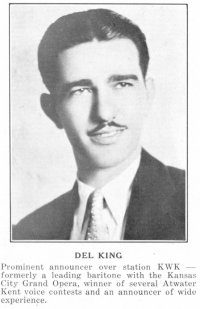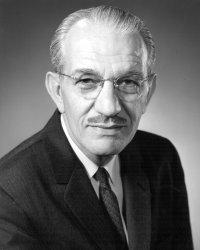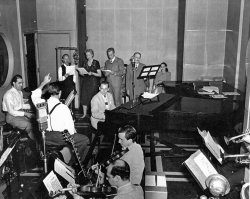Radio Articles
What He Really Wanted to Do Was Sing
In 1931, a young radio announcer named Woody Klose was sent on assignment to Lambert Field where his job was to be part of the first three-way conversation between pilots in flight and an observer on the ground. In a way, the broadcast was symbolic of the ups and downs of Woody’s career.
He came to St. Louis at age 16 with his family, and, seeking work to help pay for his education at Washington University, he ended up as an usher at the Missouri Theater. From that position he was promoted to doorman at the new Ambassador Theater, which was also owned by the Skouras Brothers.
His university work was aimed at his professional goal, which was print journalism, but Woody freely admitted that he wanted to be a professional singer. The problem was that no one thought he had enough musical talent. That didn’t stop him from trying, though. He spent most of his $12 weekly income on voice lessons, and the idea of becoming a print journalist never got off the ground. He dropped out of Washington University.
One July morning he went to the KMOX studios, which were located in the Mayfair Hotel, and actually auditioned for a singing job. The station’s director of programming, Katheryne McIntire, was in charge of the auditions, and she wasn’t impressed. Neither was station manager George Junkin, and Woody’s radio singing future crashed. A Globe-Democrat account of that day, published later, quoted Woody: “But just as I was leaving the room, Miss McIntire called me. She told me that, although she couldn’t do much for me as a singer, she thought I had possibilities as a radio announcer…I suppose I should have been deeply gratified. Instead, I was just a bit piqued that my talent as a vocalist had not been recognized.”
He went to work on the air at KMOX at the age of 18. Within a couple days, he was assigned to cover an endurance flight at what was then called Lambert St. Louis Flying Field. Sometimes there was nothing to relate, he told the Globe reporter, “too frequently nothing but the bare recital that the boys were floating around in the heavens.” At the end of the flight, he did a live report on the CBS network. It was a perfect way to celebrate his 19th birthday. Management was pleased with his work and gave him a regular, entry level shift of early morning announcing chores, which included a daily exercise program.
Within a few months he had been promoted to other shifts and was voted the most popular radio announcer in St. Louis in one newspaper’s poll. He was still convinced that he was a singer, though, and he explained to the Globe reporter how he saw a chance to impress the station’s listeners. The story bears a faint resemblance to the work habits of a future station manager, Robert Hyland.
“One night,” said Klose, “we were running late, 1 to 1:30. Local artists were the performers. It was my idea that Mr. Junkin would be in bed at that time, so I decided to slip in a song of my own. I was singing quite nobly when I happened to look out the window of the studio into the auditorium. There sat Mr. Junkin. Apparently he was not yet convinced that he had found a boy wonder. He simply grunted and told me to stick with announcing, which I did.”
Woody Klose left KMOX at the age of 22 to join a local ad agency. He continued to search for the magic career, working briefly at KSD as program director and taking the job of assistant manager of WTMV when he was 25. The latter part of his career was spent in advertising.
And that big broadcast involving the pilots and ground communication – it was a bust. All the listeners heard were repeated efforts to establish radio contact: “Come in, Woody.” “Can you hear me, Phil?”
(Reprinted with permission of the St. Louis Journalism Review. Originally published 5/2003)
